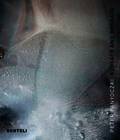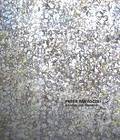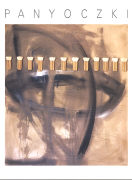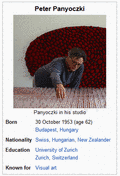Peter Panyoczki
New Zealand
peter(at)panyoczki.ch
Publications and References

- Peter Panyoczki: Surface and Beneath
Peter Panyoczki: Surface and Beneath
Benteli Publishers
192 Pages
ISBN 978-3-7165-1822-9
Order: peter(at)panyoczki.ch
Peter Panyoczki is at home on two continents and thus his life is that of a perpetual emigrant – a person permanently on the move, which is also reflected in his work that is permeated by signs of presence during absence. He belongs to the 1980s generation of artists who polemically rejected conceptual art yet did not simply return to figurative art, instead having a conceptual interest in the question of art as a medium: art is perceived as a medium when its visibility is put to the test. His work expresses the paradox of communication that refuses to reveal itself by providing information of what it is made of. It is pleasantly free of morality, while at the same time it does not avoid the tension created by self-irony and a socially reflected "cultural criticism".
With texts written by Wystan Curnow, Brett Graham, Herbert Lachmeyer, Marianne Karabelnik and Beat Wyss.

- Peter Panyoczki: Distance and Proximity
Peter Panyoczki: Distance and Proximity
with texts from Wystan Curnow, Georg Kohler and Peter Panyoczki
published by Imp.Press New Zealand, 2004
112 pages / 88 illustrations
ISBN 0-476-01102-7
Fr. 60.- / NZ$ 80.- (plus delivery)
order at: peter(at)panyoczki.ch

- Peter Panyoczki, Monographie.
Peter Panyoczki, Monographie
60 farbige, 30 s/w Fotos, 159 Seiten, Kartoniert.
Benteli-Verlag, Bern, 1996.
ISBN 3-7165-0979-5
Fr. 78.00
Volker Schunk: Peter Panyoczki
From: PETER PANYOCZKI, MONOGRAPHIE, Benteli Verlag, Bern, 1996
At the beginning of the 1980s the artistic work of Peter Panyoczki (born 1953) develops by distancing itself from avant-garde trends and by taking part in essential postmodern positions. Drawings sratched onto the corpus of the picture join themselves, via earthy grounds, with seemingly prehistoric traces and symbols to many-layered statements, which place namely his material sand and ashes pictures in the vicinity of an Antoni Tapièes or a Rolf Iseli.
"The concern is to paint breaches in being, breaches through which the invisible becomes visible", said the naive Hungarian, who fled with his parents to Switzerland as a child, took a degree in philology and chose the way of the artist autodidactically.
Increasingly his production concentrates on plastic an installation works. Panyoczki joins together plates of slate, driftwood, tree bark, stones, lead, steel, feathers, materials from Nature and civilisation, into sculptures oscillating between archaic, ethically-tinged fetisch forms and reflective irony.
The integration of weathered material or found remnants evokes cyclical processes. Dissolutions and transformations of form and matter appear as an attempt to transcend the horizon of modern consciousness to contents buried and forgotten in the process of civilasations.
Artistic creation as a ritual of reconciliation, aware of its futility and still compelled to manifest itself: Panyoczki's allegorical gestures have parallels not only in the work of Joseph Beuys; they likewise point back to the symbolist art of the turn of the century and to the pantheist idealism of the humanistic epoch.
Volker Schunk, 1996
Volker Schunk, born in 1944. Dr. phil.; Lives and works in Zurich as an art journalist and exhibition maker.


